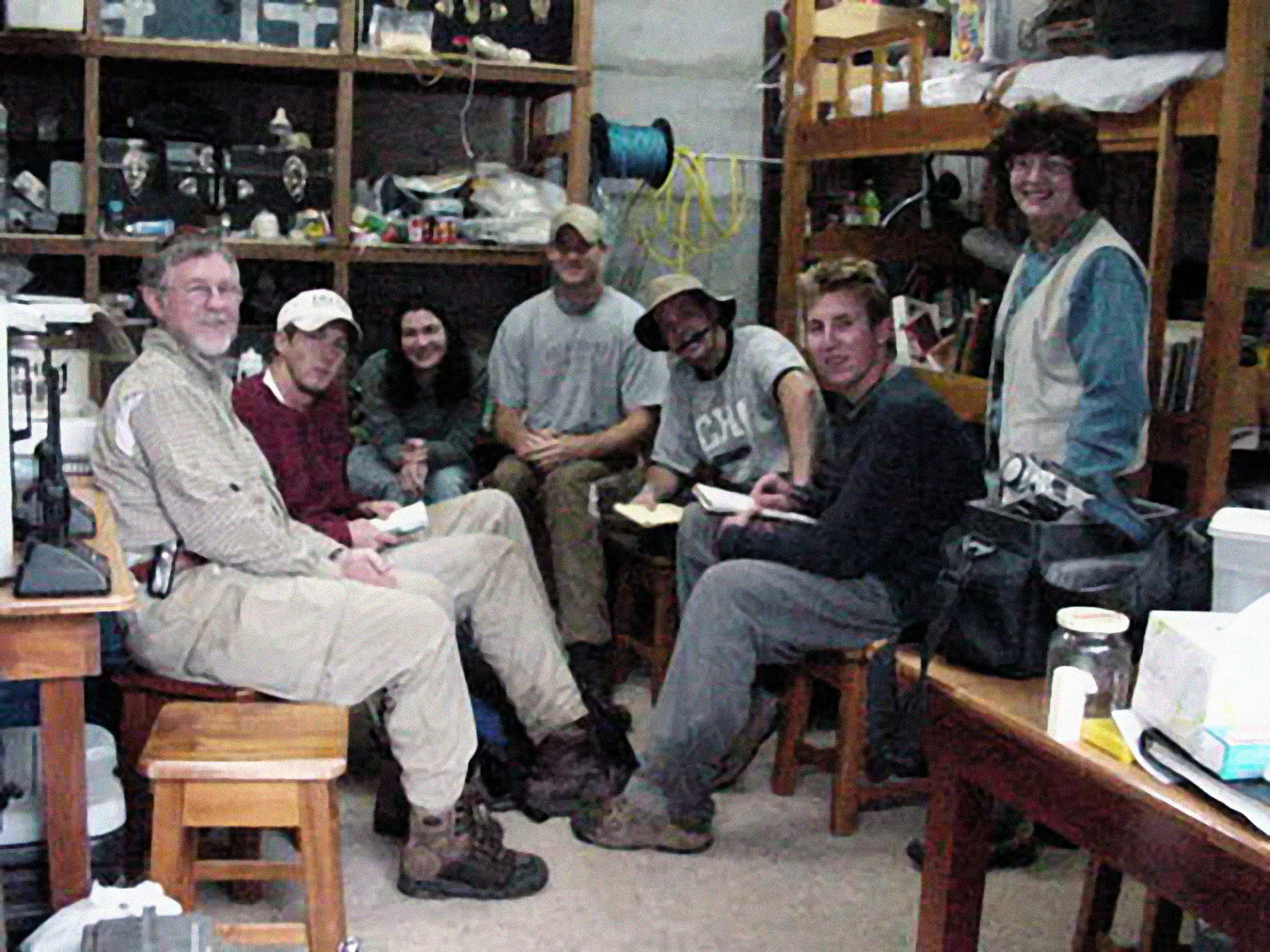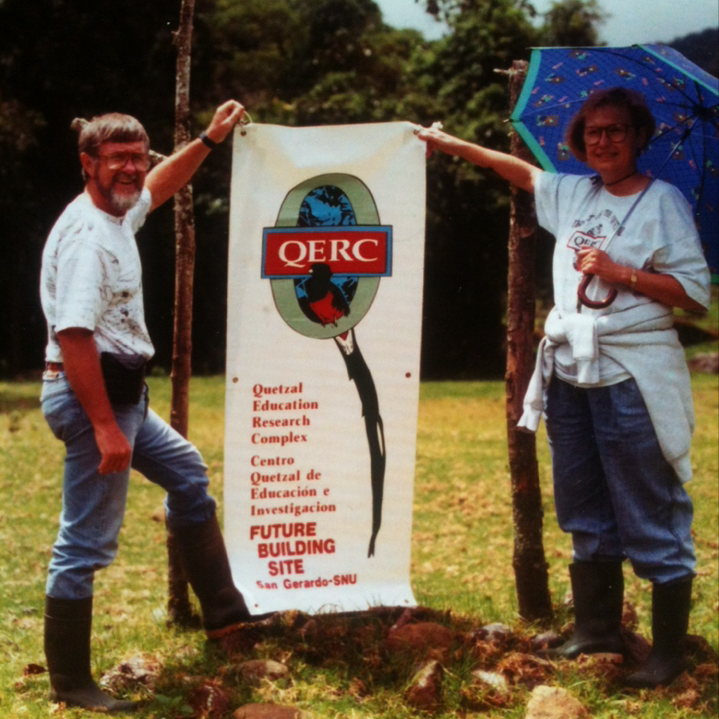

Shared interests, dreams come to fruition
In 1982, the idea of the Quetzal Education Research Center emerged out of the relationship between Southern Nazarene University professor Dr. Leo Finkenbinder and landowner/cattleman Efrain Chacón. Efrain and his wife, Caridad pioneered the settling of the Savegre Valley in 1952. At the time, Efrain was known across Costa Rica and across Europe as a leader in raising prized Holstein cattle.
After visiting the valley and seeing the immense biological study opportunities in the montane cloud forest, the seed for the research center was planted in the mind of Dr. Finkenbinder. Dr. Finkenbinder began to bring students down to the valley regularly. Through their letters with the members of the Chacón family, and growing opportunities to host fishermen in the valley, in 1983, the family sold off the prized cattle as they began to dedicate themselves to conserving the ecological prize in their own backyard. They vowed not to cut down another tree. When Efrain tells the story, he often comments how glad he is that he had only an axe when clearing pastureland for the cattle, and not a chainsaw.
This was the beginning of the family’s investment into “eco-tourism” industry which now includes: The Savegre Hotel Natural Reserve and Spa, Batsu Bird Watching Garden, apple and avocado production, trout farming, and succulent plant sales. Each year, thousands of visitors come from around the world.
Dr. Finkenbinder and his wife Zana’s early visits to the Savegre Valley were fraught with challenges: their stays in the valley were spartan, with limited housing facilities and lab space, and to make the trip into the city, they had to first hike 6 miles out of the valley and then hitchhike their way in. As the frequency of their visits increased, the need for a more permanent solution emerged.
Through Dr. Leo Finkenbinder’s close relationship with the Chacón family and shared interest in environmental research and sustainability, their partnership led to the completion of construction of a small laboratory in 1996 and a larger educational and research facility in May 2001.
Upon completion of the facility in 2001, students have been invited to participate in research and education opportunities presented by QERC. Areas of research and education have included the study of the local quetzal population dynamics and migration, stream dynamics, mycology, mammal predator/prey relationship, and larger aspects of a tropical ecosystem.
This participation has developed into a comprehensive semester program targeting the implementation, methodology, and findings of tropical biome research. The QERC semester program is designed to holistically engage students in work and programmed experiences that will provide them with the opportunities to develop knowledge and skills in the areas of field research, ecological principles, environmental ethics from a Christian worldview, and in the development of a culture-orientated perspective. In this manner students cultivate and demonstrate applicable approaches to issues of environment and conservation within their geographical and political contexts and the contemporary global challenges facing them.
It is expected by all involved that the relationship between QERC, participating students, visiting faculty, and the larger San Gerardo de Dota community will continue to provide opportunities to develop transformational discernment as they work through the practical implications of the broad ideal of ecological sustainability.
To read more about how the Chacón family settled San Gerardo de Dota in the mid-1900s, click here.
